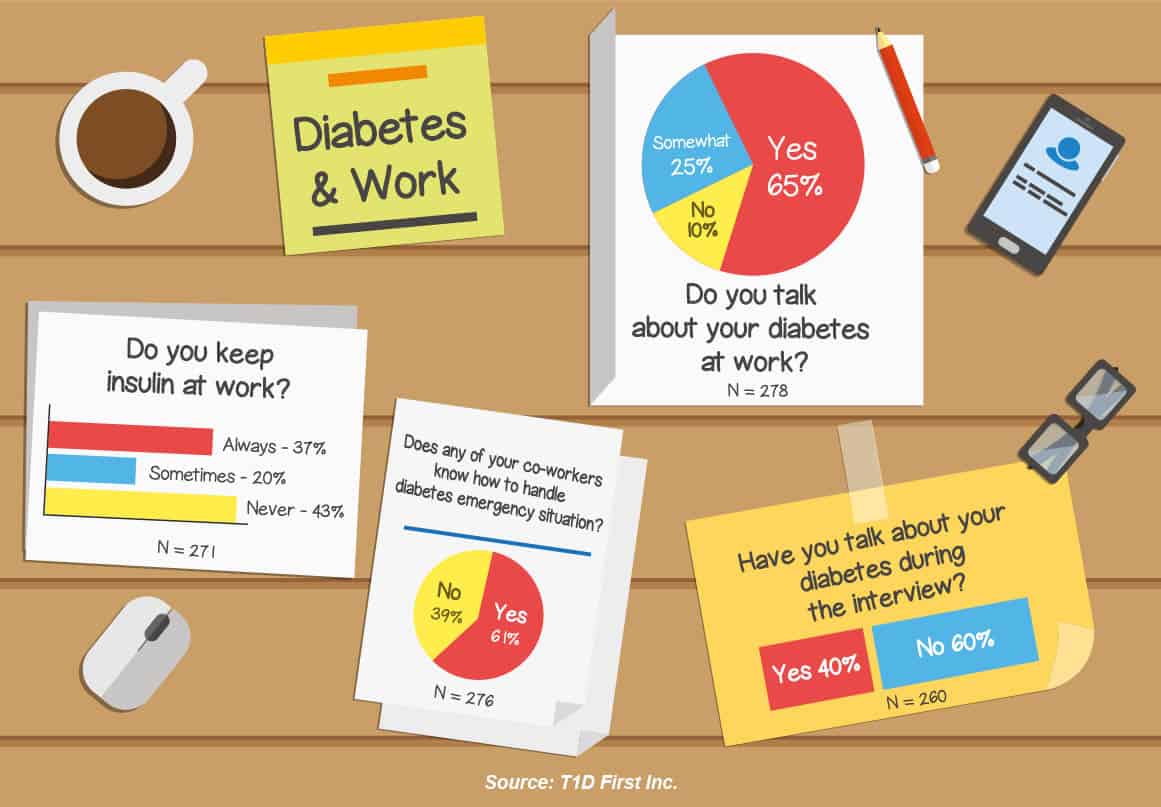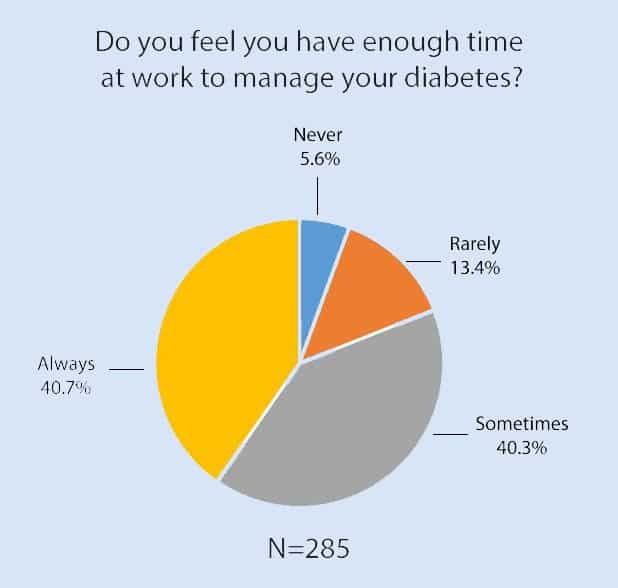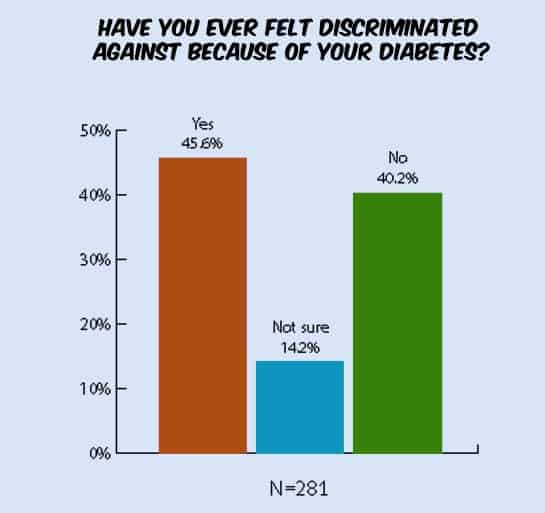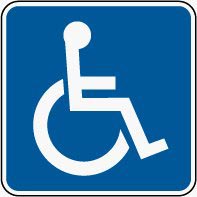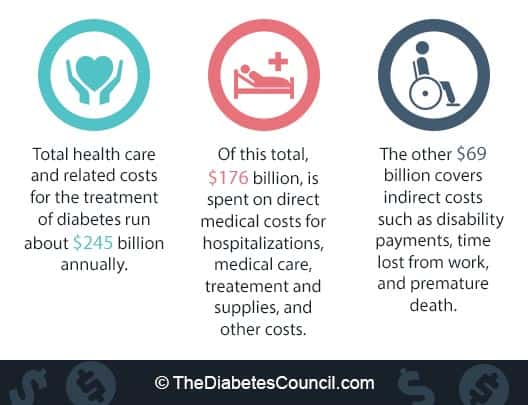If you have recently been diagnosed with diabetes, your head is probably spinning with all of the questions spiraling through your mind. You are likely thinking of planning for a variety of situations, and chances are, you are worried about managing your diabetes at work with a hectic schedule.
When Crystal contacted TheDiabetesCouncil, she was overwhelmed with the news of her diagnosis of diabetes. She wasn’t sure how she was going to manage her diabetes with the busy schedule at work. She was worried she wouldn’t find the time to check her blood sugar, eat right, exercise, AND work efficiently.
At TheDiabetesCouncil, we want to help Crystal relax, and guide her in learning how to prepare and organize for a work day. This article will lay out some tips and tricks to help not only Crystal, but anyone who is in the same boat as they learn how to plan for work shift with diabetes.
Contents
- Diabetes and work – a simulated case study on myself during a hectic hurricane shelter assignment
- Organize and plan your day
- Discuss your diabetes and medical needs with your supervisor
- Plan for regular snacks and meals
- Containers and measuring tools for portion control
- Needed supplies at work with diabetes
- Keep moving
- Workplace discrimination related to diabetes
- Disability 101
- Over to you
Diabetes and work – a simulated case study on myself during a hectic hurricane shelter assignment
As I was writing this article, I tried putting myself in the shoes of a person with diabetes while working my busy public health schedule. This week, Hurricane Matthew passed through North Carolina. We have had historical flooding in many areas. As a result, the community has opened hurricane and flood shelters. As of today, we are opening more shelters for flood victims, due to rising waters on the Black River and Moore’s Creek over the last 24 hours.
Though I am a certified diabetes educator, I am not a person with diabetes. I had to put on the “diabetes hat,” and think about the kinds of challenges that I would have to face each day in the shelter as a person with diabetes. For starters, I woke at 5 am this morning. After taking a shower and getting my coffee, I ran out of time to fix breakfast. Because there is a 45 minute commute to get to the Red Cross shelter where I was working, I had to leave immediately to get there on time.
I rushed out of the house and when I was 20 minutes into driving towards my destination, I realized that I had forgotten the supplies I needed. I could have either turned around to go get them or I could have been late to relieve the night nurse from her duty at the shelter. As tired as she would be, I figured that I better plug on down the road. That got me to thinking about how much time I would have to spend to check my blood sugar if I had diabetes. I would have failed miserably as a person with diabetes, as I had forgotten to eat breakfast, check my blood sugar, or take my medication.
Upon arrival at the shelter, the cafeteria workers were busy preparing breakfast. On the menu this morning was sausage and cheese pizza with a big, thick white crust. Not the best thing for someone with diabetes to have for breakfast. I took a small 2-inch slice, and ate half an orange, and some low fat milk. I checked my blood sugar with a glucometer, because after all, I am a certified diabetes educator and have one readily available. I pretended to take my insulin injection, with a syringe filled with sterile saline.
The shelter picked up as the nearby rivers flooded and people who were displaced from their homes found their way to the shelter. It got very hectic as we were filling out registration papers, getting folks cots, and arranging for community resources that were needed. It got so hectic that I forgot to eat anything for a full five hours.
I started to feel lightheaded, so I checked my blood sugar. It was at a low of 56, even though I was not a person with diabetes! Since I had missed lunch, I fixed myself a 30 gram carbohydrate snack. I checked my blood sugar again later and it was back up to 86.
I know how hectic a day can get. Though the shelter is an unusual situation, I find that most jobs in the healthcare system are equally hectic. You don’t seem to get the time you need to take care of yourself because you are so busy taking care of everyone else! Therefore, I see the benefit of such an exercise as this to bring awareness to the plight of people with diabetes who are struggling to manage their diabetes on the job from day to day, or night to night. Different jobs will bring up different challenges for the person with diabetes.
Organize and plan your day
Think about your work shift. It may be very beneficial for you to write down what your schedule is during work hours. When is it likely to get hectic at work? What do you anticipate your needs will be during your work day or night? Will you get any breaks? Are you allowed to go to the bathroom at certain times during your shift, or do you have to schedule trips to the bathroom?
Tips and Tricks:
- Do not forget to take and eat your breakfast
- Do not be embarrassed about your diagnosis
- You can confide in someone you trust at work
- Make sure to get up and move around during your work day, especially if you have an office job
- Eat when the need arises, and do not skip meals and snacks
- Get a good night’s sleep
- Hydrate well throughout the day
Office parties = sugar heaven
Office parties are notorious for being carbohydrate-loaded feasts. Pick a few healthy options, or limit the amount of carbohydrate snacks that you put on your plate. One option is to bring your own snacks with you to the party. That way, if there isn’t anything that you feel is the right choice for you with diabetes, you will have something to snack on while you socialize with your colleagues.
Travelling for work and diabetes
If you have a job where travelling is a part of it, you can have some added challenges. It is easy to slip in the mindset that you are on vacation, which may lead you to consume more carbohydrates than you normally would. You may want to take some extra tips from our article on traveling with diabetes here: Traveling with Diabetes Guide
Overtime, nights, and swing shifts
Working overtime and swing shifts contribute to more stress on the job. Stress increases blood sugars, and blood pressure. Stress and high blood sugars, combined with reduced time for eating healthy foods lead to unhealthy nutritional habits, reduced levels of activity, and difficulty sleeping. This necessitates more frequent blood sugar checks; therefore you may need to customize your food and insulin for night or swing shifts.
Discuss your diabetes and medical needs with your supervisor
Once you have determined exactly how much time you might have in your schedule in order to self-manage your diabetes properly, you can then sit down and talk to your supervisor. Your boss will need to be made aware of your new diagnosis and the needs that come with it. Most likely, you will need to check your blood sugars during your work day. Even if you do not have to check your blood sugars every day at work, you may need to check them on the occasion when you are feeling the symptoms of low or high blood sugar.
Find out a place where you can safely check your blood sugar and figure out what times work best during your work to do so. You will have to pencil in times for bathroom breaks, if needed.
Reasonable accommodations for diabetes at work:
- Private area to test blood sugars and give insulin if needed, eat snacks
- A place to rest following a low blood sugar
- Take time off for medical visits and diabetes self-management education
- Modified schedule at work if necessary
Check the article on diabetes discrimination at work, for more on workplace discrimination related to diabetes, and reasonable accommodations.
The role of your co-workers
Ask your supervisor where you can go to privately check your blood sugar or administer insulin if needed. Discuss with him or her the times that you will need to do so. Share with your supervisor the signs and symptoms of high and low blood sugar, and how each can be treated. If you use a glucagon pen, make sure that your co-workers know where you keep it, and how to use it.
Post signs of hypoglycemia and hyperglycemia at work
It may be helpful to post the hypoglycemia and hyperglycemia “faces,” in your break room at work, and to discuss these symptoms with those that you work with.
Plan for regular snacks and meals
It is not so complicated to get organized when it comes to planning regular snacks and meals for diabetes on the job. The extra time spent in the grocery store shopping for whole foods, including fresh fruits and vegetables, whole grains, and lean meats and dairy products, will go a long way to ensure that you have healthy foods to eat for your diabetes management. The extra time that you take to prepare meals on your days off will pay off, as you will have healthy and home-made leftovers to take with you to work.
Careful planning and preparation will be the difference between having to grab a donut in the break room, or having a healthier snack, such as some almonds and apple slices you brought from home. It will be the difference between grabbing a fast food meal, or having a salad with the appropriate amount of carbohydrates and lean proteins. As you know, these differences can define between having a blood sugar that is in target range, and having a high blood sugar.
Containers and measuring tools for portion control
You may start by purchasing containers and snack-sized plastic baggies so you can pack snacks and appropriate portioned lunches in. There are countless container options as well as measuring containers which you can eat out of. You can also pick up portion mates that allow you to measure the appropriate portions to fill your plate.
Snack preparation
Snack-sized baggies are a great way to pack various snacks to take with you to work. Once you measure out the appropriate portion to place in the baggie, you are ready to go. It may be worthwhile to pack a small cooler with some quick carbohydrates like juice or soda, in case of a low blood sugar. Always carry quick-acting carbohydrates with you at all times in case of a low blood sugar. You could also carry peppermints (use 3-4), lifesavers (use 3), or glucose tablets (use 3-4).
Food portions
Half of your plate should be filled with low carbohydrate vegetables, either cooked or raw. One fourth of your plate should be your starch, or carbohydrate containing vegetables, or bread, pasta or rice (whatever you choose for your carbohydrate serving). You should put a deck of card size, or palm size piece of meat on the remaining one fourth of your plate.
You can then add in a serving of fresh or frozen fruit, or have it for a snack later. Don’t forget to incorporate whole grains in your diet. High fiber foods will help keep your blood sugar steady. You may also add in a serving or two of low fat dairy, such as milk, yogurt, or cheese. Eating regular snacks and meals will help maintain your blood sugar steady, and keep you from being susceptible to a low blood sugar.
Some tips for meal prep:
- Before going to the super market, you can make a list of food items you need. This way you will steer clear from the food aisles that have the unhealthy options.
- On your list, ensure you have options for both the meals you will prepare and ready-made snacks you will bring with you at work
- Once a week, write down your week’s lunch and dinner options. On your day off, you can prepare large amounts of the meal so you have leftovers for the next day
- It may be worthwhile to purchase a one-time measuring tools and scale so you can effectively prepare for each meal
Needed supplies at work with diabetes
Make sure to always have your glucometer and all other necessary diabetes supplies with you at all times at your workplace. If you use an insulin pump, be sure to carry extra insulin pump site kits with you in case you hook your tubing on a doorknob walking by, or you find yourself perspiring, and the sweat peels your set off your skin.
Insulin and supplies in case of insulin pump failure
Additionally, if you use an insulin pump, you should make sure to take extra insulin and syringes with you in case of a pump failure. You should discuss with your supervisor where the best place for you to keep your medications would be and if you need refrigeration.
Keep moving
Many people with diabetes find it difficult to find the time for self-care during their work shift. It’s possible that most people in their department skip breaks, and therefore, they feel obliged to skip breaks also. It’s possible that their job requires them to work long hours with no lunch break. Challenging situations do exist when you are working a full-time job with diabetes.
Along with organizing for snacks and meals that you need to eat, you also need to figure out how you can incorporate activity into your work schedule. It’s not so easy to stay active especially when you are glued to a desk all day. Here are some tips on how to stay active while you work.
Fun fact
Here is what people with diabetes had to say when they were asked if they had enough time at work to manage their diabetes:
5.6% said never
13.4% said rarely
40.3% said sometimes
40.7% said always
Tips and tricks for staying active at work with diabetes
If you are like me, most days you don’t even get a lunch break. The morning and afternoon 15 minute breaks are few, and far between. It is no wonder that finding the time to move around at work can prove to be difficult. The following tips and tricks will help you in staying active during your work shift:
- Get up and walk around every 30 minutes. Inquire about a head set, so you can get up and walk around your office or work station to break up long periods of sitting.
- Find a chair exercise routine. There are many different exercises that you can do right from your desk chair that will improve circulation and increase muscle strength.
- Discuss with your supervisor the possibility of working in an elevated position. There are many options for this. You can even order stationary bicycle / desk combinations and pedal while you work.
- If you get the opportunity to take a 15 minute break or a lunch break, use at least part of it so that you can get a little bit of movement. Walk around the building for 10 minutes, or use your lunch hour to get in a full 30 minutes of walking
- Inquire on your work wellness programs. They may offer discounts at gyms, special fitness and wellness classes held at the work site, or walking clubs.
- Bring an exercise ball to work, and use it in place of a chair to improve strength and balance.

Laws related to workplace discrimination
There are laws and rules related to workplace discrimination in general that applies to people with diabetes, as well as to other people with disabilities. Both the state and the federal government have laws that are meant to protect persons with disabilities from discrimination. Sometimes the state laws are stricter than the federal laws, and there are also special agencies that are set up to enforce the anti-discrimination laws at the state level.
Fun fact
Here is what people with diabetes had to say when they were asked if they felt discriminated against because of diabetes.
American with Disabilities Act (ADA)
One law that applies to private employers and businesses is the American with Disabilities Act (ADA). This law applies to private companies, unions, employment agencies (as long as they employ at least 15 or more employees).
The Rehabilitation Act of 1973
If you work for the federal government, or any other employer who receives any kind of federal funding, you are then covered by the Rehabilitation Act of 1973.
The Congressional Accountability Act
If you work in Congress or with various legislative branches of the federal government, you are then covered by the Congressional Accountability Act.
Disability 101
Things to know.
Who qualifies as a person with a disability?
To be protected by anti-discrimination laws related to a disability, you must first establish that you have a disability. The definition of a disability is, “a mental or physical impairment that substantially limits one or more major life activities.” This includes diabetes, and many other conditions and chronic health diagnoses.
What is the definition of a qualified worker?
A qualified worker is defined as, “one who satisfies the skill, experience, education, and other job-related requirements of the position, and who- if given reasonable accommodation- can perform the essential functions of that position.”
Family Medical Leave Act (FMLA)
If you work for a company that has 50 or more employees, you can take up to 12 weeks per year for yourself, or a family member, for a health problem. You can use it in small increments of time. For example, you can use it for acute problems with diabetes, such as for hypoglycemia or hyperglycemia, for being hospitalized for diabetes complications. You can even use it for doctor’s appointments if you are out of sick leave.
Will I need a medical evaluation to work if I have diabetes?
For certain jobs, your employer could require that you take a medical examination. There are several times during your employment where you might be required to take a medical examination based on your disability, in this case, diabetes. Those times are:
- Pre-employment physical
- Request for reasonable accommodations for your diabetes
- Returning to work following medical leave for your diabetes
- Following problems with low blood sugar where your employer deems you a “safety risk”
Some common ways people with diabetes are discriminated against
Workplace conduct rules generally apply to everyone, so if you have a low blood sugar that causes you to “act out,” your employer could discipline you based on your behavior. Even if your poor behavior or conduct is related to diabetes, you could still be disciplined on the job.
Sometimes employers will say that a person with diabetes is creating a safety issue at work by having a low blood sugar on the job. Again, it may be due to the fact that the employer doesn’t really know a whole lot about diabetes, so a little education may help.
If education doesn’t help, a legal advocate from the American Diabetes Association may be able to help you with this, and other issues related to discrimination involving people with diabetes.
Fired for diabetes?
The first thing that you should do if you feel that you have been fired for having diabetes is to call the American Diabetes Association. They will help you to navigate processes, and understand your rights as a person with a disability under the law. There are processes for filing a charge of discrimination, and the ADA can help you to file with the Equal Employment Opportunity Commission (EEOC), or the fair employment agency within your own state. You may also want to file a union grievance if applicable, or get help with returning to work after an absence due to your diabetes.
ADA legal advocate
Contact a legal advocate at the ADA here: http://www.diabetes.org/living-with-diabetes/we-can-help/legal-assistance.html
The chart below represents the financial burden of diabetes, including the financial burden of diabetes related to lost time from work, disability payments, and premature deaths:
Over to you
We hope this article on working with diabetes helps you. Here at thediabetescouncil.com, we strive to provide you with the most up-to-date and comprehensive articles on diabetes. If we have left anything out, if you would like to make any comments or if you would like us to add other useful information, please write in the comments section below. As always, thank you for visiting our website, and please come again! Share this article with anyone who needs help managing diabetes at work.
TheDiabetesCouncil Article | Reviewed by Dr. Christine Traxler MD on May 29, 2020
References
- http://www.diabetes.ca/diabetes-and-you/know-your-rights/employment-discrimination-your-rights/diabetes-in-the-workplace-a-guide-for-employers
- http://www.webmd.com/diabetes/features/tips-to-help-you-manage-your-diabetes-at-work
- http://www.diabetes.org/living-with-diabetes/know-your-rights/discrimination/employment-discrimination/
- http://www.diabetes.org/living-with-diabetes/know-your-rights/discrimination/employment-discrimination/your-rights-on-the-job.html
- http://www.diabetes.org/living-with-diabetes/know-your-rights/discrimination/employment-discrimination/medical-leave.html
- https://health.clevelandclinic.org/2015/11/best-way-manage-diabetes-work/
- http://phlabs.com/simple-tips-for-managing-diabetes-at-work
- https://www.bd.com/us/diabetes/page.aspx?cat=7001&id=7352
- https://www.diabetesatwork.org/index.cfm?daw=WorkplaceBasics&jcKhz=DiabetesWorkplace
- http://www.diabetes.ca/diabetes-and-you/healthy-living-resources/general-tips/diabetes-shift-work
- https://www.reddit.com/r/diabetes/comments/3dysp7/managing_diabetes_while_working_retail/







